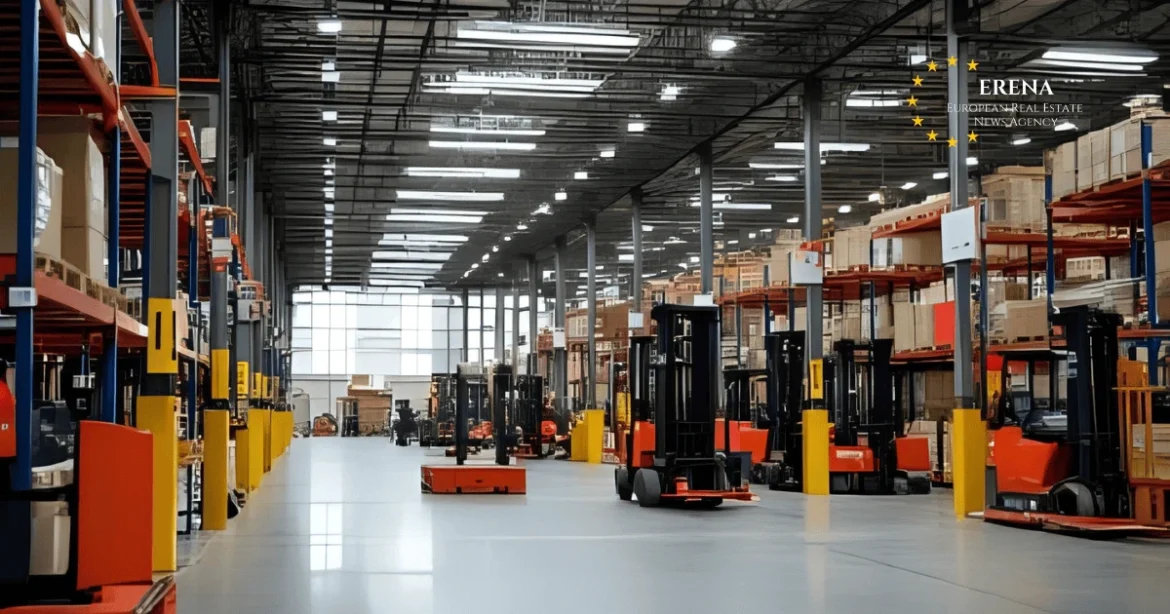In 2025, the logistics property sector is caught between slowing development and resilient demand. Vacancies have edged slightly higher in some markets, yet the pipeline of new projects is shrinking to its lowest level in more than a decade. With most ongoing construction already pre-leased, the pool of modern warehouses is narrowing just as e-commerce and nearshoring add fresh layers of demand. The outcome, analysts say, will likely be another round of tightening by late 2025, pushing rents upward in prime locations.
Shrinking pipeline despite stable leasing
Across Europe, CBRE reports leasing volumes remain above pre-pandemic averages, but completions are slowing, and speculative projects make up less than half of what is currently under construction. JLL confirms the global picture: new starts are at record lows in both Europe and the United States, with nearly three quarters of the American pipeline already committed. This imbalance is expected to reduce vacancies over the next year, reversing the temporary relief that came with the surge of deliveries in 2024 and early 2025.
E-commerce’s structural footprint
E-commerce continues to reshape logistics demand. Prologis data shows that online fulfilment requires roughly three times more space than traditional retail distribution, a ratio that has held steady for a decade. Eurostat figures indicate that 77% of Europeans made online purchases in 2024, underscoring why delivery networks are still expanding. Analysts expect that growth in 2025 will be driven less by new shoppers and more by higher spending per buyer — intensifying pressure on logistics systems and reinforcing the need for warehouse capacity near urban centres.
Nearshoring and regionalisation
Nearshoring strategies are redrawing the industrial map. Mexico has become a flagship example, as companies restructure supply chains closer to North America. National vacancy rose to around 6% in 2024 on the back of a surge in completions, but demand in Monterrey and other hubs remains strong. With construction now slowing again, these markets are expected to tighten quickly, confirming nearshoring as a structural driver of logistics demand.
Prime logistics rents in Europe (€/m²/month)
Prime rents across Europe are proving resilient, with some markets even edging higher as competition intensifies for well-located, modern warehouses. Dense metropolitan areas and transport gateways show the strongest momentum, where occupiers are willing to pay a premium for proximity to consumers and infrastructure:
- Netherlands (Amsterdam/Schiphol): around €10.0, supported by scarce land near the airport
- Germany (Hamburg): steady at €8.50, reflecting the strength of the port hub
- Spain: Barcelona (ZAL) has risen to €9.0–9.2, while Madrid holds at €6.6–6.9
- Czechia (Prague): around €7.5, with higher levels for urban projects
- Italy (Milan, Rome): €5.6–5.8, stable in the country’s largest agglomerations
- Poland: big-box space at €3.2–5.75, with city logistics ranging €4.0–8.25 in Warsaw and Kraków
Facilities that offer robust grid connections, automation-ready layouts, and immediate access to large consumer markets continue to command the highest premiums.
Occupiers move earlier to secure space
CBRE’s 2025 occupier survey shows 96% of companies plan to maintain or expand their warehouse footprint. Third-party logistics providers and parcel operators are leading new requirements, often signing forward leases before projects are completed. As Dr. Carl Deppisch, Head of European Industrial and Logistics Occupier at CBRE, notes, occupiers now enjoy slightly more choice than during the pandemic years, but the slowdown in speculative supply suggests that window could close quickly.
Investor sentiment steadies
After two years of pricing corrections, investor appetite is returning. Prime yields have stabilized in several European markets, and capital flows into logistics have grown modestly in early 2025. Investors are focusing on core hubs, transport-linked corridors, and assets with ESG compliance, betting on steady rent growth in the low single digits.
Outlook
The market is shifting toward a new phase. Vacancies remain manageable, but the collapse in new starts and the high rate of pre-leasing point to tighter availability in late 2025 and beyond. Occupiers with expansion needs are advised to secure sites early and prioritize assets that can support automation, electrification, and sustainability requirements. For investors, logistics continues to stand out as one of the most attractive real estate sectors — backed by structural demand drivers that show no signs of weakening.

